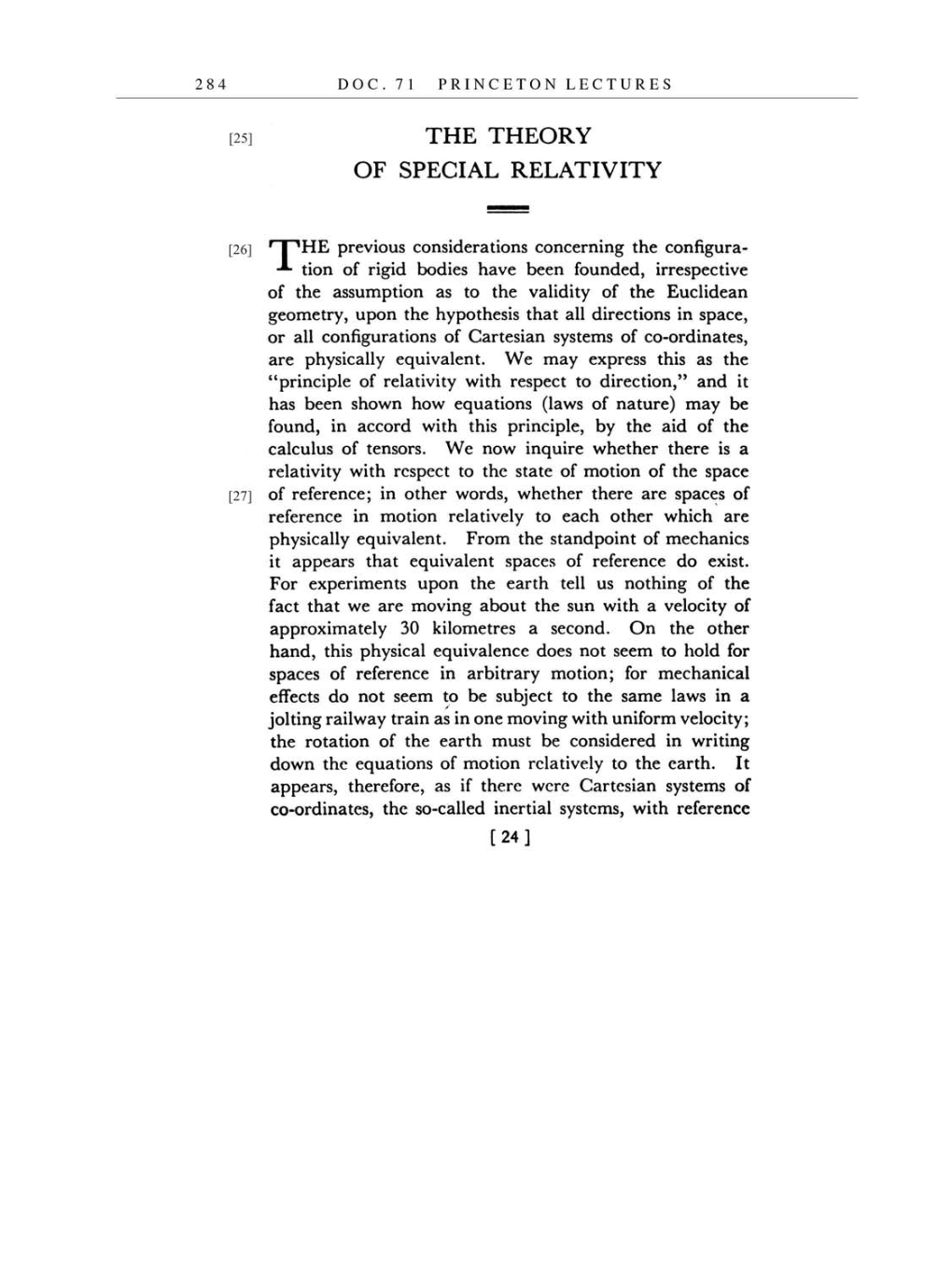284 DOC.
71
PRINCETON LECTURES
[25]
THE THEORY
OF
SPECIAL
RELATIVITY
[26]
THE previous
considerations
concerning
the
configura-
tion
of
rigid
bodies
have been
founded, irrespective
of the
assumption
as
to
the
validity
of the Euclidean
geometry, upon
the
hypothesis
that
all
directions
in
space,
or
all
configurations
of Cartesian
systems
of
co-ordinates,
are
physically
equivalent.
We
may express
this
as
the
“principle
of
relativity
with
respect
to direction,”
and
it
has
been
shown how
equations
(laws
of
nature) may
be
found,
in
accord with
this
principle,
by
the aid of the
calculus of
tensors.
We
now
inquire
whether
there
is
a
relativity
with
respect to
the
state
of motion of the
space
[27]
of
reference;
in
other
words,
whether there
are
spaces
of
reference
in
motion
relatively to
each other which
are
physically
equivalent.
From the
standpoint
of
mechanics
it
appears
that
equivalent spaces
of
reference do
exist.
For
experiments
upon
the earth
tell
us
nothing
of
the
fact that
we are
moving
about
the
sun
with
a velocity
of
approximately
30
kilometres
a
second.
On the other
hand,
this
physical
equivalence
does
not
seem
to
hold
for
spaces
of reference in
arbitrary motion;
for
mechanical
effects
do
not
seem
to
be
subject to
the
same
laws
in
a
jolting railway
train
as
in
one
moving
with uniform
velocity;
the rotation
of the earth
must
be
considered
in
writing
down the
equations
of
motion
relatively to
the earth. It
appears,
therefore,
as
if there
were
Cartesian
systems
of
co-ordinates,
the
so-called
inertial
systems,
with
reference
[24]
